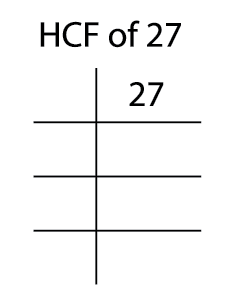
PUMPA - SMART LEARNING
எங்கள் ஆசிரியர்களுடன் 1-ஆன்-1 ஆலோசனை நேரத்தைப் பெறுங்கள். டாப்பர் ஆவதற்கு நாங்கள் பயிற்சி அளிப்போம்
Book Free DemoPrime factorization is to write the composite number as a product of its prime factors.
Let us find the prime factor for 12.
12 = 4 \times 3
4 can be written as 2 \times 2.
12 = 2 \times 2 \times 3
Therefore, the prime factor of 12 is 2 \times 2 \times 3.
There are two ways to find the prime factor.
1. Factor tree method
2. Division method
Factor tree method
Let's see the example using factor tree method.
Example:
Find the prime factor of 48 using the factor tree method.

Prime factor of 48 = 8 \times 6.
Prime factor of 8 = 4 \times 2 = 2 \times 2 \times 2.
Prime factor of 6 = 3 \times 2.
The ending prime numbers are the prime factors.
Therefore, the prime factor of 48 = 2 \times 2 \times 2 \times 2 \times 3.
Division method:
Step 1: Write the given number.
Step 2: Start with the lowest prime number, which exactly divides the given number.
Step 3: Write that lowest prime number on the left side of the given number.
Step 4: Write down the quotients in the next line of the given number.
Step 5: Repeat the process until you get 1 as a quotient.
Step 6: The prime numbers you obtained on the left side of the given number is prime factors.
Example:
Find the prime factor of 27 using division method.
Write a pair of factors.
27 = 9 \times 3
Now further factorize the composite factor 9 as 3 and 3.
Repeat the process till you get the prime factors of all the composite factors.
Since the last number 3 is a prime number, we cannot factorize it further.

Therefore, the prime factor of 27 = 3 \times 3 \times 3.